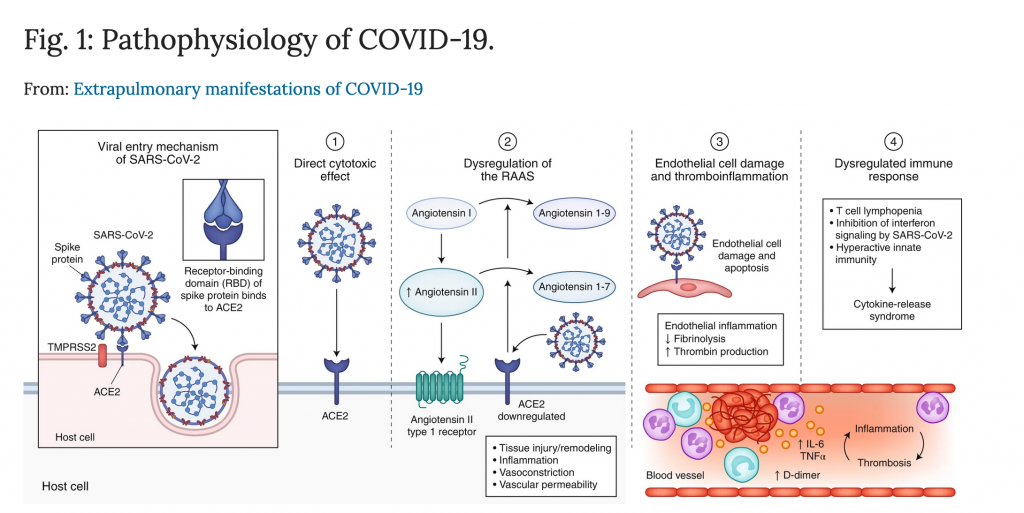ABSTRACT/ Although the coronavirus is most well known for causing substantial respiratory pathology, it can also result in several extrapulmonary manifestations of COVID-19. These conditions include thrombotic complications, myocardial dysfunction and arrhythmia, acute coronary syndromes, acute kidney injury, gastrointestinal symptoms, hepatocellular injury, hyperglycemia and ketosis, neurologic illnesses, ocular symptoms, and dermatologic complications.
Given that ACE2, the entry receptor for the causative coronavirus SARS-CoV-2, is expressed in multiple extrapulmonary tissues, direct viral tissue damage is a plausible mechanism of injury. In addition, endothelial damage and thromboinflammation, dysregulation of immune responses, and maladaptation of ACE2-related pathways might all contribute to these extrapulmonary manifestations of COVID-19.

Here, researchers review the extrapulmonary organ-specific pathophysiology, presentations and management considerations for patients with COVID-19 to aid clinicians and scientists in recognizing and monitoring the spectrum of manifestations, and in developing research priorities and therapeutic strategies for all organ systems involved.
In this study you will learn:
- Direct viral toxicity
- Endothelial cell damage and thromboinflammation
- Hematologic manifestations
- Cardiovascular manifestations
- Renal manifestations
- Gastrointestinal manifestations
- Hepatobiliary manifestations
- Endocrinologic manifestations
- Neurologic and ophthalmologic manifestations
- Dermatologic manifestations
- Special considerations for pregnancy and children
- Future directions
Click Here for Full Text Study





